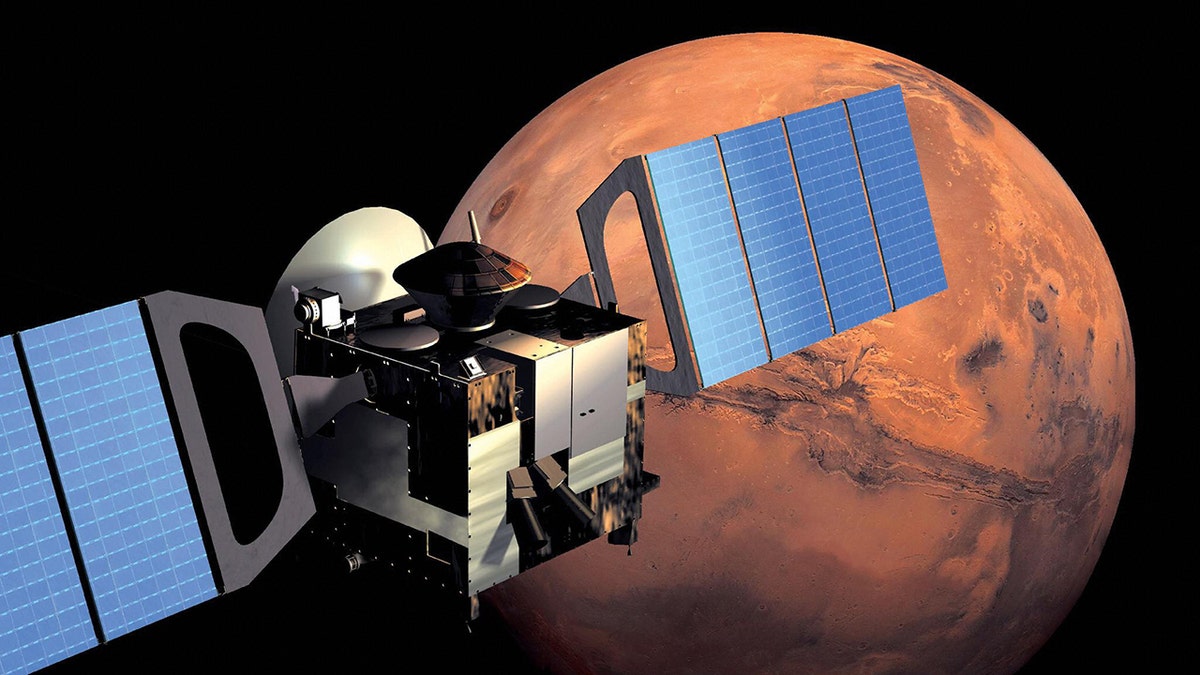
New Study Unveils Ferrihydrite as Key to Mars’ Red Hue and Ancient Habitability
A groundbreaking new study published in Nature Communications sheds light on the enduring mystery of Mars’ distinctive red color, attributing it primarily to the mineral ferrihydrite. This finding, partially funded by NASA, not only provides a more accurate explanation for the planet’s rusty appearance but also suggests a potentially habitable past characterized by cool, wet conditions vastly different from the dry, cold environment that exists today.
For centuries, scientists have pondered the reason behind Mars’ iconic red shade. While the presence of iron oxide minerals on the Martian surface has long been recognized, the specific mechanisms and conditions that led to the planet’s widespread reddish coloration remained a subject of debate. Previous theories often emphasized hematite as the primary contributor, but this new research challenges that notion, highlighting the significant role of ferrihydrite.
The study, spearheaded by Adam Valantinas, a postdoctoral fellow at Brown University who began the research as a Ph.D. student at Switzerland’s University of Bern, involved a comprehensive analysis of data gathered from multiple Mars missions, including various rovers that have traversed the planet’s surface. The observational data was then meticulously compared with laboratory experiments conducted under simulated Martian conditions. These experiments focused on analyzing how light interacts with ferrihydrite particles and other minerals, enabling researchers to better understand the spectral signature of Martian dust.
Valantinas stated, "The fundamental question of why Mars is red has been considered for hundreds if not for thousands of years." He further explained that their analysis suggests ferrihydrite is ubiquitous in the Martian dust and likely present within the rock formations as well. "We’re not the first to consider ferrihydrite as the reason for why Mars is red, but we can now better test this using observational data and novel laboratory methods to essentially make a Martian dust in the lab."
A crucial aspect of the study lies in the conditions under which ferrihydrite forms. Unlike hematite, which requires relatively higher temperatures, ferrihydrite can develop in the presence of cool water. This finding implies that Mars may have once possessed an environment conducive to liquid water before undergoing a dramatic transformation from a wetter, potentially more hospitable planet to the arid world we observe today.
Jack Mustard, a professor at Brown University and the senior author of the study, emphasized the significance of this research as a "door-opening opportunity." He elaborated, "It gives us a better chance to apply principles of mineral formation and conditions to tap back in time."
Mustard also highlighted the importance of the Mars Sample Return mission, which aims to retrieve samples collected by the Perseverance rover. "What’s even more important, though, is the return of the samples from Mars that are being collected right now by the Perseverance rover. When we get those back, we can actually check and see if this is right." These samples will provide invaluable insights, allowing scientists to directly analyze the composition and mineralogy of Martian rocks and confirm the findings of this study.
The implications of this research extend beyond simply explaining the planet’s red color. The discovery of widespread ferrihydrite suggests that Mars likely experienced a prolonged period of cool, wet conditions in its ancient past, potentially creating a habitable environment for microbial life. While the current Martian atmosphere is too cold and thin to support liquid water on the surface, billions of years ago the planet held an abundance of water, as evidenced by the presence of ferrihydrite.
Geronimo Villanueva, Associate Director for Strategic Science of the Solar System Exploration Division at NASA’s Goddard Space Flight Center, a co-author of the study, commented, "These new findings point to a potentially habitable past for Mars and highlight the value of coordinated research between NASA and its international partners when exploring fundamental questions about our solar system and the future of space exploration."
The research team is eager to further investigate the ancient Martian climate and the chemical processes that have shaped the planet’s surface over time. Valantinas stated that their goal is to understand the chemical processes on Mars, both ancient and present. Furthermore, he emphasized the profound question of habitability, noting that understanding the conditions present during the formation of ferrihydrite is crucial to determining whether life could have ever existed on Mars. The study suggests that the conditions required for ferrihydrite formation—the presence of oxygen and water reacting with iron—were drastically different from the dry, cold environment prevalent today.
The pervasive nature of Martian dust, spread across the planet by strong winds, ultimately contributes to Mars’ iconic red appearance. This study enhances our understanding of the composition and origin of this dust, linking it to a potentially habitable past.
In conclusion, this research presents compelling evidence that ferrihydrite plays a pivotal role in Mars’ red coloration and offers valuable insights into the planet’s ancient environment. It paints a picture of a past Mars characterized by cooler temperatures and the presence of liquid water, fostering conditions that could have potentially supported life. The future analysis of Martian samples collected by the Perseverance rover promises to further solidify these findings and revolutionize our understanding of the Red Planet’s history and habitability. The work underscores the power of international collaboration in unraveling the mysteries of our solar system, paving the way for future explorations and a deeper comprehension of our place in the universe.
